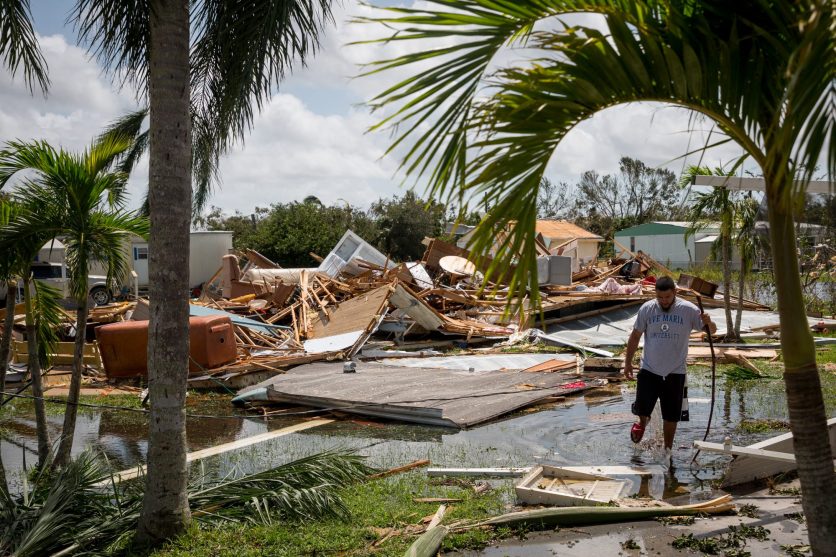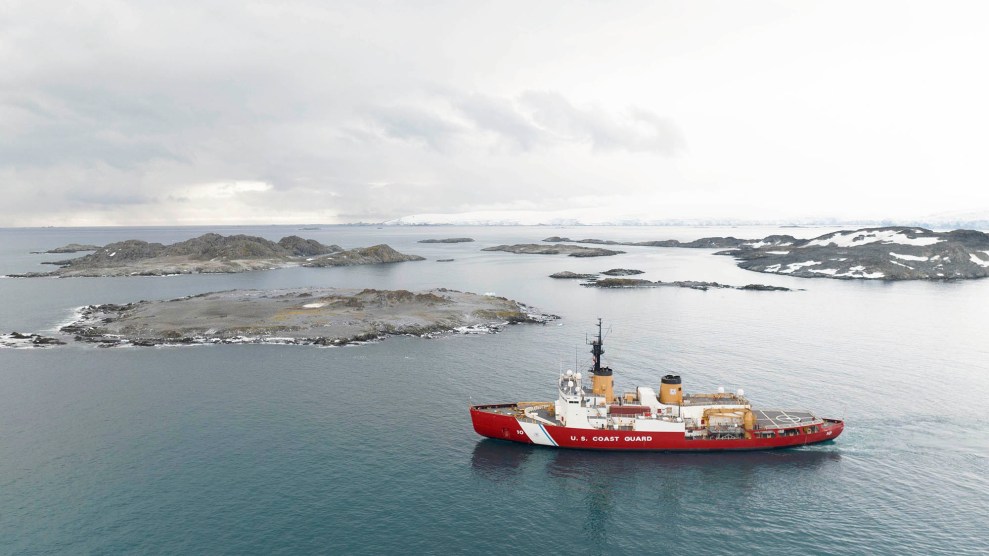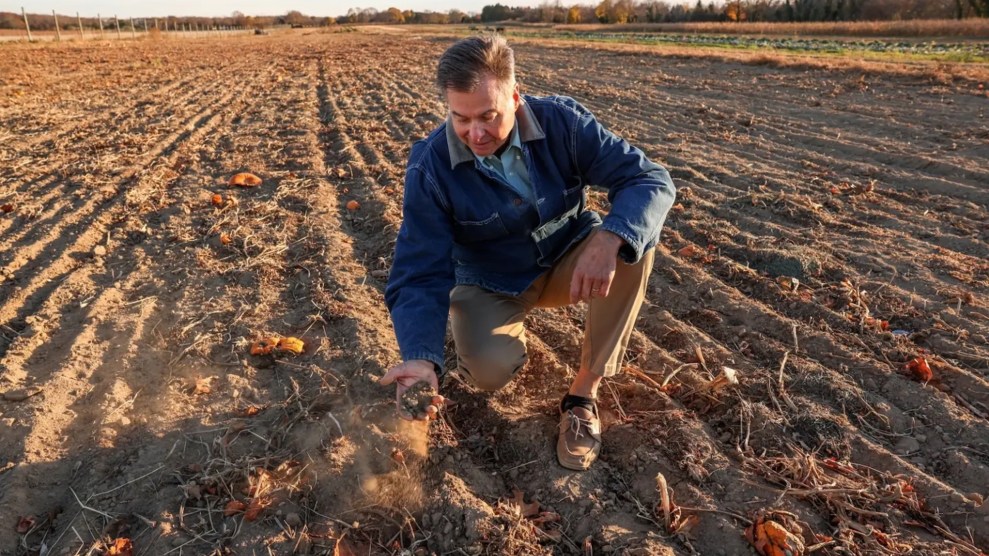Five years ago, Superstorm Sandy—a monstrous post-tropical cyclone with hurricane force winds—struck New York, bringing record-breaking wind gusts and deadly flooding. In New York City, 53 people died—nearly half of them were from Staten Island. The Ocean Breeze, Midland Beach, and Dongan Hills communities were especially hard hit, with 11 fatalities. A few months after the storm, WNYC reporter Matthew Schuerman described the square mile that makes up parts of these communities as “the most dangerous place to be in New York City” during Sandy.
Joe Herrnkind, a middle-aged man who moved to Ocean Breeze in 2000, remembers those days, as he walks through the deserted streets of his once tight-knit beach community. Most of the homes have been torn down, and a few are boarded up waiting to be demolished. The homes that do remain are surrounded by empty plots of land where wild turkeys wander. Unlike many other New York victims of Sandy who have rebuilt their communities, those from these neighborhoods knew that rebuilding was not the best option. Some sold their land to developers, and a few others, like Herrnkind and his neighbors, sold their land to the governor’s office so it can be returned to its natural state.
“We’re a low-lying community,” he says. “We had constant flooding and wildfires. You hear all this and you’re saying, ‘Why would you want to live there?'”
Recent hurricanes Harvey, Irma, and Maria have all raised the same question: What is to be done with the dozens of towns and cities in Texas, Florida, and Puerto Rico that have developed infrastructure on vulnerable flood-prone land that routinely requires massive cleanup and rebuilding efforts after each disastrous storm? Altogether, the recent storms could cost up to nearly $400 billion in damages. But some communities and local leaders are starting to realize that this model won’t break the cycle. In Ocean Breeze, instead of rebuilding on vulnerable flood plains, some residents have chosen to leave old neighborhoods behind and let nature take its course.
In 2012, when Sandy approached New York, then-Mayor Michael Bloomberg ordered evacuations of nearly 375,000 people in low-lying communities ahead of the storm. Herrnkind gathered his two dogs and left to stay with a friend in New Jersey. Most of his neighbors followed the evacuation orders, but eight or nine families stayed behind. Two of his neighbors died.
Sandy’s peak winds were recorded at 115 miles per hour and Staten Island saw wind gusts of up to 80 miles per hour. Father Cappodano Boulevard, the main road separating Ocean Breeze from the Atlantic, rises several feet above the side streets. Sandy’s unprecedented 16-foot surge overtopped the roads and poured into homes. A few days later, when Herrnkind was able to return, he had no idea if his home was going to be standing. The city estimated that more than 300,000 homes were damaged by the storm’s flood.
“An officer told me, ‘You can’t go down there,'” Herrnkind recalls. When he finally arrived the water was still nearly waist deep. “It’s still there,” he remembers thinking when he first saw his house. “I have something to work with.” The watermark on a lamp post today shows that the storm surge reached far above his head, which explains why his furniture and all his personal belongings were gone.
Local leaders struggled to respond to the crisis. New York City created Build It Back, a program for rebuilding destroyed and damaged homes. There are more than 8,000 participants and by 2017, the mayor’s office estimates 87 percent of those who enrolled have received compensation, completed construction, or had their homes acquired by the city. But the program has come under criticism. Many homeowners dropped out due to delays. City Controller Scott Stringer and City Councilman Mark Treyger who represents parts of Brooklyn have been fierce critics of the program. In a letter to Build It Back director Amy Peterson, the two wrote that the number of dropouts “raises serious questions about our City’s ability to mount an efficient and effective recovery operation in the event of a future disaster.” Herrnkind jokingly refers to it as “Build It Wrong.”
After six months of living in his car, which he had parked in front of his abandoned house, and disappointed by the city’s program, Hernnkind realized “the land itself should never have been built on.” Much of the region was a salt marsh, particularly vulnerable to storm surge and floods. “It was a very low, natural, spongy salt marsh, and it was filled to create homes,” Robert Brauman, a project manager for the New York City Department of Environmental Protection told Curbed New York in 2016, “and that was where the problems started.”
Another option for some homeowners was a program from the Governor’s Office for Sandy Recovery, which has been buying houses that were destroyed or substantially damaged and transforming them to open space and wetlands. The goal is to create a natural coastal buffer that can protect communities from future storms. In late 2013, more than a year after the storm Gov. Cuomo announced that Ocean Breeze would join Oakwood Beach as a town eligible for state buyouts, and Hernnkind’s entire block was included. Reluctant to “put someone else in harm’s way,” Hernnkind concluded that he and his neighbors should take advantage of the state buyout program. He was able to sell his home to the state at pre-storm value and move elsewhere on the island.
So far, more than 600 homes have been purchased through the buyout program. Once the sale goes through, the state government demolishes the home and lets nature reclaim the land. Today, Ocean Breeze is mostly empty, but complicating matters are the residents who refuse to leave. In Oakwood Beach where most of the land is going back to nature, remaining residents struggle with lack of trash pick-up and crumbling roads. One of Herrnkind’s former neighbors who stayed behind is an elderly woman who feared her children would put her in a nursing home if she left. Some opted out of the program because they didn’t have the proper paperwork required to sell their homes. Others didn’t want to give up their homes in a community they loved.
But staying behind comes with a cost. According to the New York Times, flood insurance premiums could rise up to 25 percent for homes that were damaged by Sandy.
On Hernnkind’s section of the street, only one home remains out of eight. “Around here, 90 percent of each block went,” he says, “and only one or two people stayed.” Just down the street from where Herrnkind used to live, more turkeys mill about on empty lots where homes used to be.
Hernnkind’s former neighbor Frank Moszczynski, a tall man with a large presence, took the state buyout and moved to another neighborhood on Staten Island. He doesn’t have much sympathy for someone who willingly stays in a vulnerable area. “Why should someone emergency workers have to go out and risk their lives for someone who chose to stay in harm’s way?” he asks pointedly. Today, the only thing protecting the Ocean Breeze from another storm is a four-foot hill of sand.
Across the street from the vacant lot he used to call home, Hernnkind stands on the beach looking at the Verrazano-Narrows Bridge and Brooklyn’s Coney Island, a view he used to be able to see from his bedroom window. “If it weren’t for Sandy,” he says, “I’d still be here.”

















